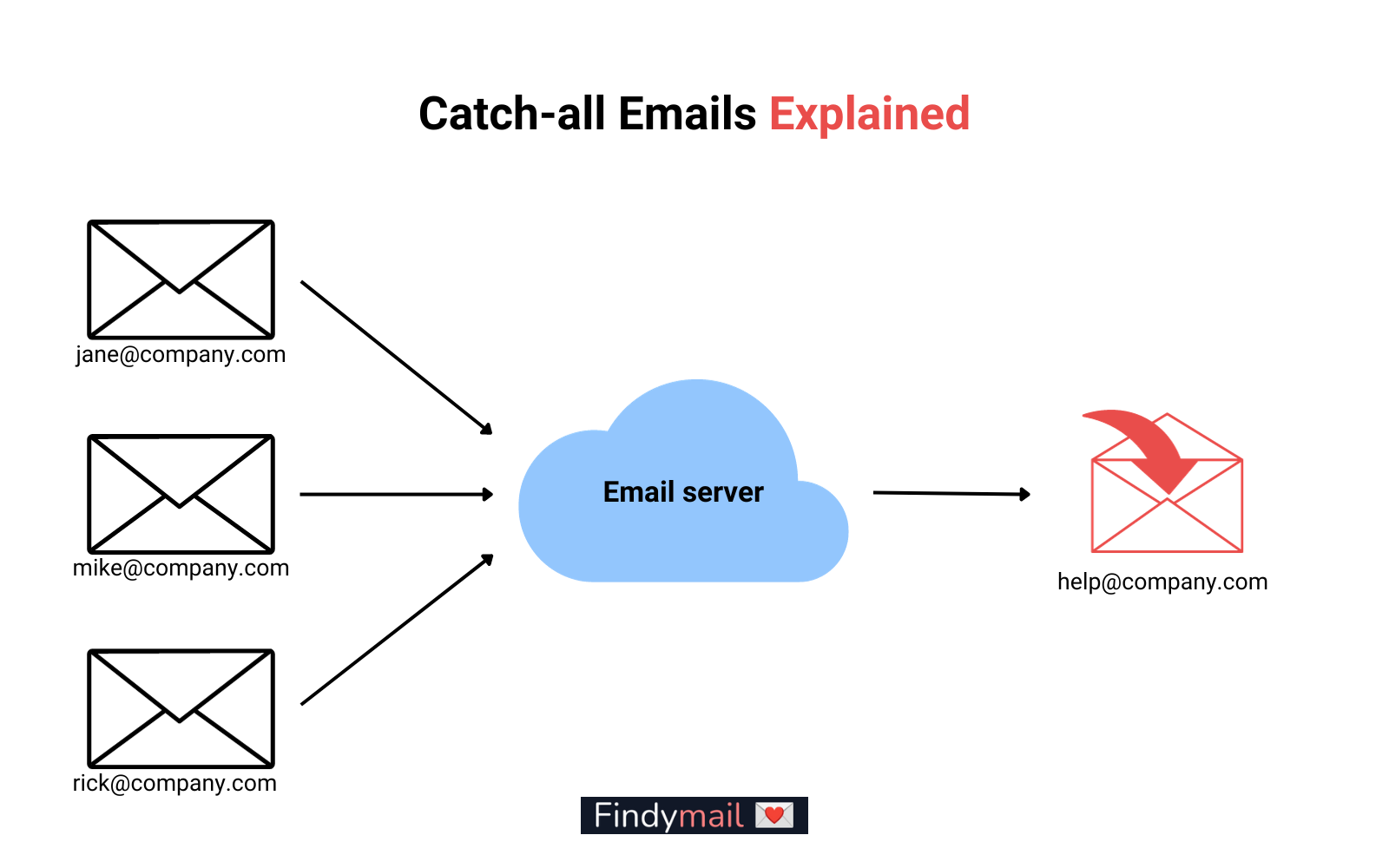Every business wants to improve customer experience, but it’s impossible without effective communication. However, despite all the channels, email remains the most popular way for businesses to connect with customers.
Unfortunately, using the wrong email address can stop any effective communication in its tracks. That’s where catch-all emails come in!
Today, we’re looking at all things catch-all emails, from (dis)advantages to their impact on your email marketing!
What Are Catch-All Emails?
Catch-all emails, also known as accept-all emails or wildcard emails, can receive emails to any invalid email address on your domain. If customers send emails to invalid addresses, they won't bounce back.
Businesses typically use catch-all emails to ensure that any emails sent to an invalid or non-existent address still get delivered. This way, they ensure that they don't miss important emails like orders, customer queries, or support requests.
How Do Catch-All Emails Work?
Let’s assume a customer wants to place an order with a well-known electronics store - TheTechStore. To do this, they’ll need to send an email to [email protected].
If the customer then accidentally sends an email to [email protected], the email will bounce back. As a result, the email won’t reach the store’s sales department, and they won’t make a sale.
Even worse, the customer might take their business elsewhere.
Conversely, if that business has set up a catch-all email, the catch-all email server will accept emails from this address, and the business will receive the email. Actually, as mentioned earlier, they’ll receive any email sent to their domain, no matter what address a customer uses.

What does it mean for you?
Well, for email verification that means you can't know if you're gonna email a real person or if your email is going to end up in a centralized thrash bin that is never read (or at least not by the right person).
Standard email verification tools do not solve this because the verification gets in the same trap: the email server replies "yes, this email address exists" to each and every email address that is attempted to be verified. As a result, the answer is worthless and you can't really know if the email address really exists. It could be a valid email ... or not.
That's why catch-all emails are usually in a separate "catch-all" or "risky" category, neither valid nor invalid.
Catch-All Emails that... Still Bounce??
But wait, it gets worse than that!
In the wild, we often see an even more vicious catch-all configuration: catch-all that still bounces!
An email bounce is the message you're receiving saying the email address you tried to reach does not exist (note: this is only one of the many possible reasons your email can bounce).
You want to avoid that as much as possible because it decreases your email sender reputation and makes you land in the spam folder.
And as it turns out, some domains are configured in such a way that:
- standard email verification does not work: it replies "yes, this email exists" to all email addresses (catch-all)
- ... but if you actually send an email, it still bounces if the address does not exist, rather than just silently getting in a centralized inbox.
Not good!
The Impact of Catch-All Emails on Cold Emails
Since about 30% of businesses use catch-all emails, they could be a potential problem for your cold email campaigns.
The best practice is usually to keep catch-all emails out of your email list. The reason is that, since they have not been properly validated, there is a risk for you to end up with bounces and thus making you land in spam.
Don't get me wrong, they could also potentially be valid... but unless you're very confident in those emails or have a special reason to take the risk (eg. very small TAM), it's better to be safe than sorry.
Yes, that means around 30% of your TAM (total adressable market) is not safely reachable by cold email...
Unless?
How to Solve the Catch-All Email Problem
Given the importance of the problem, we at Findymail decided to not give up and worked hard to find a way to validate those emails nonetheless.
And we succeeded!
Findymail has now developed a unique technology that allows us to validate catch-all emails in real-time.

That means you can verify a list of emails, catch-all or not, and we will tell you if yes or no they are safe to use in your cold email campaigns - even if it is a catch-all domain!
This is why Findymail customers can reach 20-30% more of their total adressable market - we validate emails that others can't!
It’s Time For You to Check Your Email List!
While catch-all emails can be handy for a business, they can wreak havoc on your deliverability. Before you send your next campaign, make sure your email addresses are verified and - even better - pre-verify them during lead generation.
After that, there’ll be one less thing to worry about!




